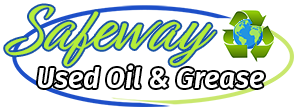
How to Prevent Grease Trap Issues Before They Start
Grease traps are crucial components in commercial kitchens and restaurants, designed to prevent fats, oils, and grease (FOG) from entering the sewer system. However, these traps can pose significant problems if not properly maintained. Preventing grease trap issues before they start requires a proactive approach that includes regular maintenance, effective management practices, and awareness of potential problems. This blog explores various strategies and tips to help you keep your grease trap functioning smoothly and prevent costly disruptions to your business.
Common Grease Trap Issues
Several common issues can arise with grease traps if not properly maintained:
- Clogging: Accumulated grease can solidify and cause blockages in the trap and connected pipes, leading to backups and overflows.
- Odors: Decomposing FOG can emit foul odors, impacting the kitchen environment and potentially violating health regulations.
- Damage: Grease traps can deteriorate over time due to neglect or improper use, leading to leaks or structural issues.
Understanding these potential problems underscores the importance of preventive measures.
Proactive Maintenance Tips
Preventing grease trap issues starts with establishing a routine maintenance schedule and following best practices:
1. Regular Cleaning and Pumping
Schedule regular cleaning and pumping of your grease trap according to local regulations and the size of your establishment. This prevents grease buildup and ensures the trap operates efficiently. For high-volume kitchens, this might mean monthly or even weekly cleanings.
2. Proper Disposal of Waste
Train staff on proper waste disposal practices to minimize the amount of FOG entering the trap. Use sink strainers to capture food particles and encourage scraping plates into the trash before washing.
3. Use of Biodegradable Cleaners
Avoid using harsh chemicals that can damage the trap or interfere with its operation. Instead, use biodegradable cleaners that break down grease without harming the trap or the environment.
4. Inspection and Maintenance Checks
Regularly inspect the grease trap for signs of damage or wear. Check for leaks, proper sealing, and structural integrity. Address any issues promptly to prevent them from escalating into larger problems.
5. Educate Staff
Educate kitchen staff about the importance of grease trap maintenance and their role in preventing issues. Emphasize the impact of FOG on the plumbing system and overall kitchen operations.
Best Management Practices
In addition to maintenance, implementing best management practices can further prevent grease trap issues:
1. Install Grease Traps Correctly
Ensure that grease traps are installed correctly and in compliance with local codes and regulations. Proper installation facilitates easier maintenance and reduces the risk of malfunctions.
2. Monitor Grease Trap Levels
Monitor the grease levels in your trap regularly to determine cleaning frequency. Keep records of cleanings and inspections to track performance and identify any patterns or issues.
3. Consider Grease Trap Size
Choose a grease trap size that matches the volume of FOG your establishment produces. Undersized traps can quickly fill up, while oversized traps may not function efficiently with low volumes of FOG.
4. Implement a Maintenance Plan
Develop a comprehensive maintenance plan that outlines responsibilities, schedules, and procedures for grease trap maintenance. Assign tasks to designated personnel and ensure they are properly trained.
Conclusion
Preventing grease trap issues requires a proactive approach that combines regular maintenance, effective management practices, and staff education. By implementing these strategies and tips, you can ensure that your grease trap operates efficiently, minimizing the risk of costly repairs, downtime, and compliance issues. Remember, a well-maintained grease trap not only protects your plumbing but also contributes to a cleaner environment and a smoother kitchen operation. Stay proactive, stay informed, and keep your kitchen running smoothly with proper grease trap maintenance.
Need Grease Trap Services in St. Bernard, LA?
Categorised in: Grease Trap Service
